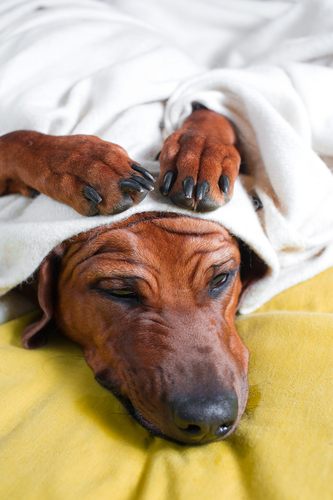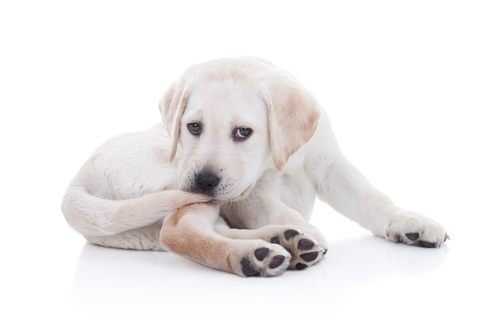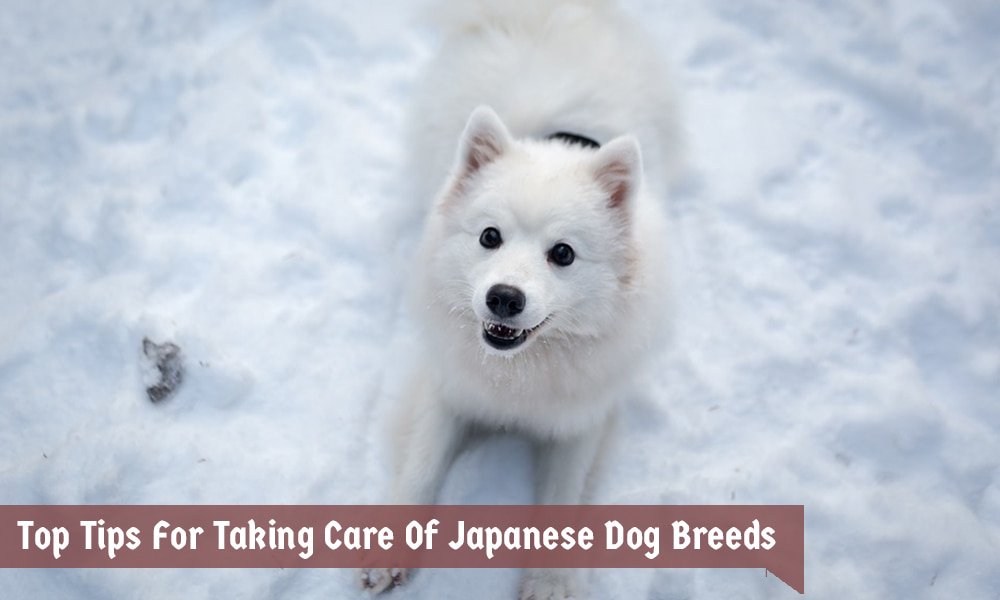
Every dog breed has its own traits, type of coat, exercise needs, and other things. Japanese dog breeds are not an exception to this rule. Japanese dog breeds have similar needs; however, they are not the same. For example, most Japanese dogs have thick double coats, prick ears and make excellent guard dogs. While some are hunting dogs, other Japanese dog breeds are meant to be guard dogs. You will find a Japanese dog that’s a good companion dog or guard dog.
Many Japanese dog breeds will need high-quality dog food. Some may need a specific protein or a well-balanced diet.
Contents
What are Japanese Dog Breeds?
There are quite a few different native Japanese dog breeds. Japanese dog breeds are those that originated from Japan, though it usually refers to the six Nihon-Ken dog breeds or six indigenous dog breeds in Japan.
- Shiba Inu
- Akita
- Shikoku
- Hokkaido
- Kai Ken
- Kishu Ken
It can also refer to the Japanese Spitz. The Japanese Spitz was first seen as a show dog in Tokyo, and people believe that it is a descendant of the German Spitz.
Shiba Inu
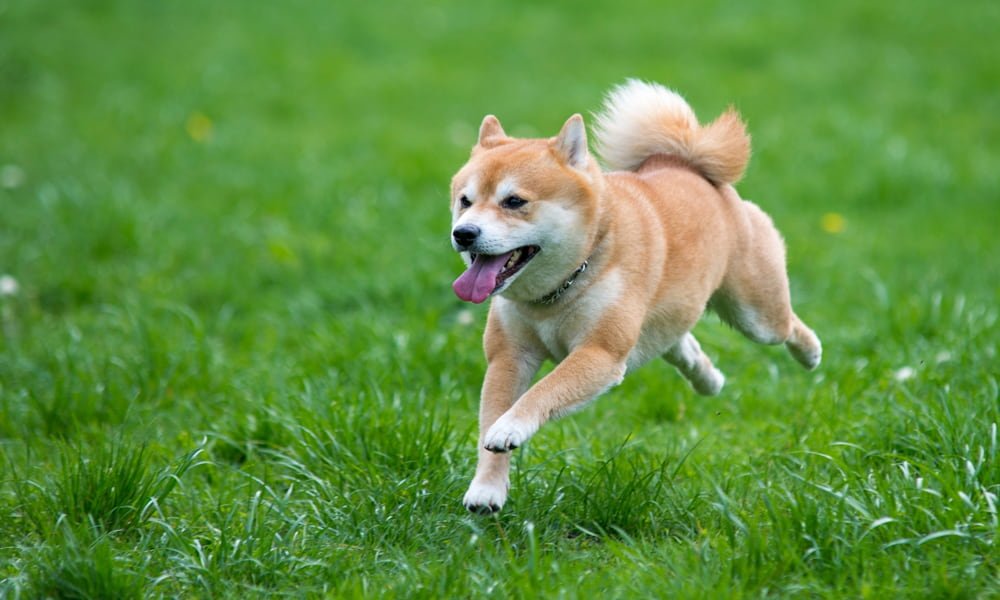
The Shiba Inu is the smallest of the native Japanese dog breeds. They live for roughly 13-17 years and weigh between 17 and 23 pounds. They are most commonly known for being active and alert.
Shiba Inu should be fed high-quality dog food. Some can be picky about what they want to eat, meaning you may have to experiment to find what your Shiba Inu does and does not like. Other Shiba’s will eat everything in sight. Shibas have a long coat that sheds a lot. Frequent brushing will help to maintain the amount of Shiba Inu fur in your home and clothing.
Shibas Inus need a lot of exercise as they have a lot of energy. They are easily potty trained; however, they are frequent runners. If a Shiba Inu finds an open gate, it may leave and never come back.
A common risk with Shibas is their allergies. Their allergies commonly lead to itchiness and irritated skin, making them uncomfortable when going about their day-to-day lives. It is important to identify the allergen affecting your Shiba Inu and find the best way to help with their allergy. You can click here for more information on the Shiba Inu.
Akita
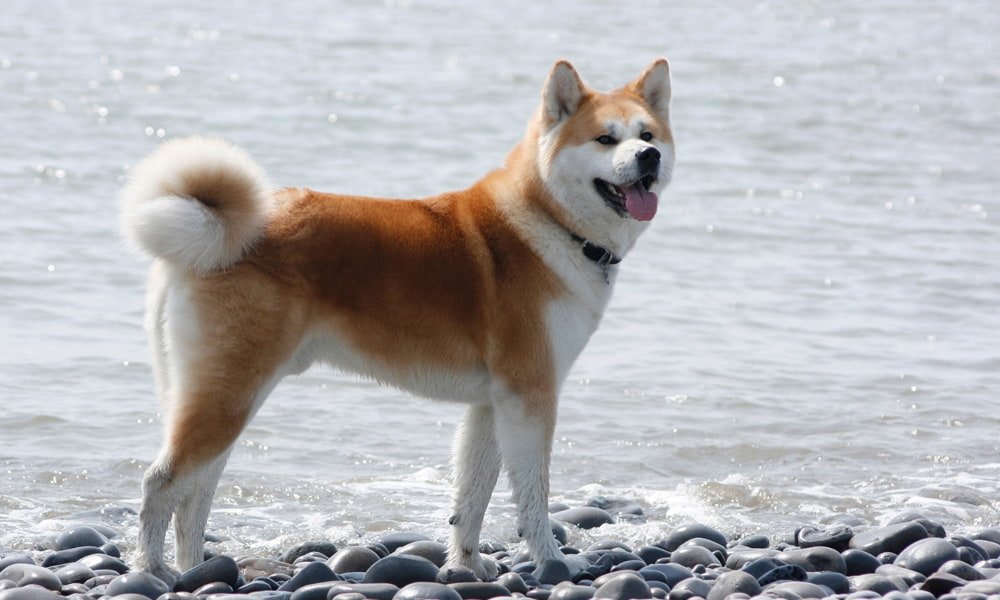
Another popular Japanese breed is the Akita or Akita Inu. Akitas are large dogs. They are one of the six native Japanese breeds and are known for being a loyal companion dogs or guard dogs. The Japanese Akita lives 10 to 13 years and can weigh anywhere between 70 and 130 pounds.
The Akita Inu is probably the most popular companion dog of the Japanese breeds. They thrive on human companionship and are great with other animals. However, they can be very nervous or cautious around new people.
Akitas should be fed a high-quality diet up until the age of 7. At seven years old, change these Japanese dogs over to a low-calorie diet to help prevent any kidney disease. These animals are very protective of their food. It should be separate from any children or any other animals.
Like most breeds from Japan, Akitas do shed. You will need to brush your Akita dog at least once a week due to their thick double coat and bathe them once a month or when dirty. Twice a year, they will shed more than usual. These dogs do not need hard exercise. They will do fine with only a short walk or a brisk jog.
Begin training an Akita at a young age and continue to train them as they grow. Like some other Japanese dogs, they can be very independent and become very stubborn.
Socialize your Akita as much as possible from a young age so they do not become overly possessive of their owners or aggressive towards other dogs. They are commonly very aggressive with other dogs, and especially dogs of the same sex.
A common risk in Akitas is bloating, which is life-threatening if you don’t go to a vet immediately.
Shikoku
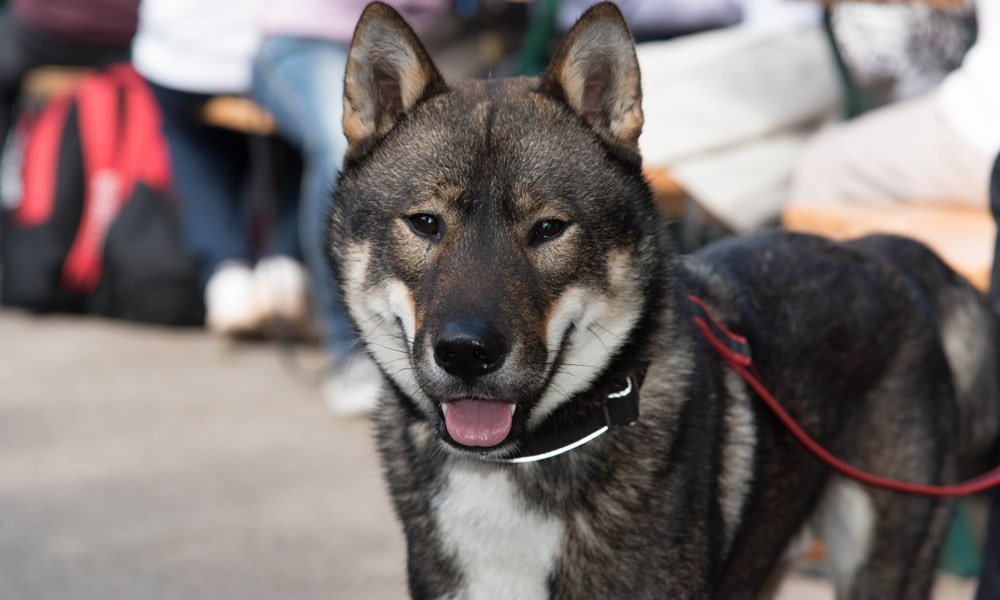
Shikokus tend to be mistaken for the Japanese wolf. These dogs look wild, and they are alert and very energetic. They got their name from the island where they were found, Shikoku.
Like some other Japanese dog breeds, the Shikokus was utilized as a hunting dog due to the amount of muscle on the dog. They have very well-developed muscles and were originally bred to hunt and track wild boars. A full-grown Shikoku will be anywhere from 35-55 pounds. These dogs can live for up to 12 years.
Shikokus should be placed on a high-quality food diet to offer them a long and happy life.
These native dogs have a very harsh dense double coat, which was utilized for the mountains on the island of Shikoku. To maintain this tank, brown, or wolf grey coat, they should be brushed weekly and bathed monthly.
Exercise is very important for this active Japanese dog. Even short walks will be very good for your Shikoku. There are no common health concerns to worry about with a Shikuko, as long as they are from a reputable breeder.
Hokkaido
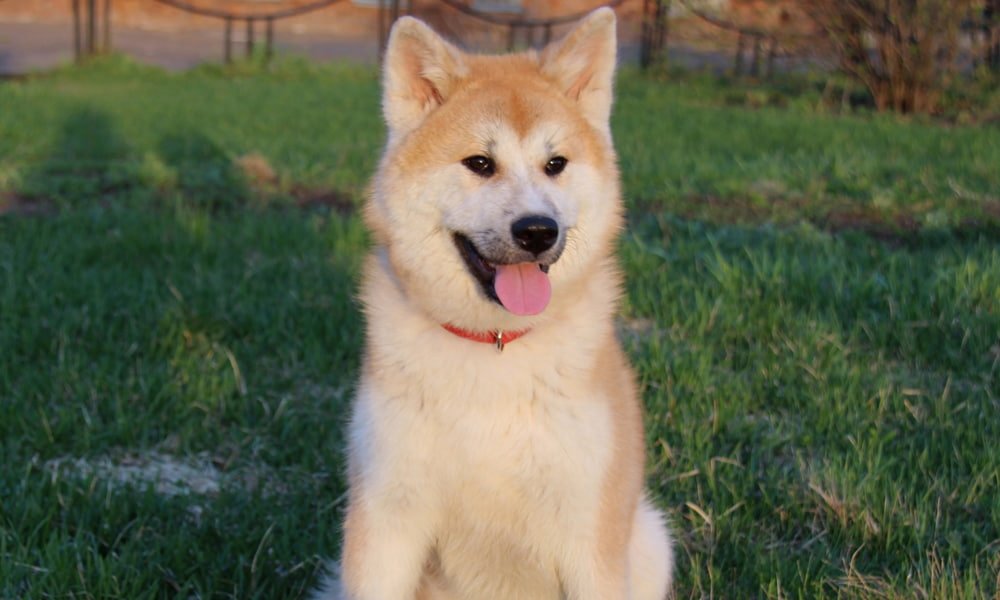
The Hokkaido Ken or Hokkaido Inu Japanese breed is known for its devotion, alertness, and for being affectionate dogs. These Japanese dogs have pointed ears and come in white, red, black, brindle, tan, and grey. A Hokkaido dog weighs anywhere from 44 and 66 pounds and lives for approximately 12 to 15 years.
This member of the Spitz breeds has a long double coat, like other Japanese dog breeds. You should feed a Hokkaido Inu a high-quality diet containing plenty of protein. This diet should be well-balanced, with protein, fat, and carbohydrates, including vegetables and fruit.
To maintain their long, double coat, they will need regular brushing to remove dead fur. During the “blow” season, which occurs twice a year, brush them daily and give them a thorough bath to remove the large clumps of dead fur.
The Hokkaido Inu is a very active dog, and you should walk them daily. They have to be mentally stimulated, too. To do this, you can give them tasks, like playing fetch or diving off a dock. Without the mental exercise of having a task, they may become destructive, hyperactive, or very anxious.
This breed is usually very healthy. They can have many conditions, including hip dysplasia, heart murmurs, idiopathic seizures, psychogenic polydipsia, and pica.
Kai Ken
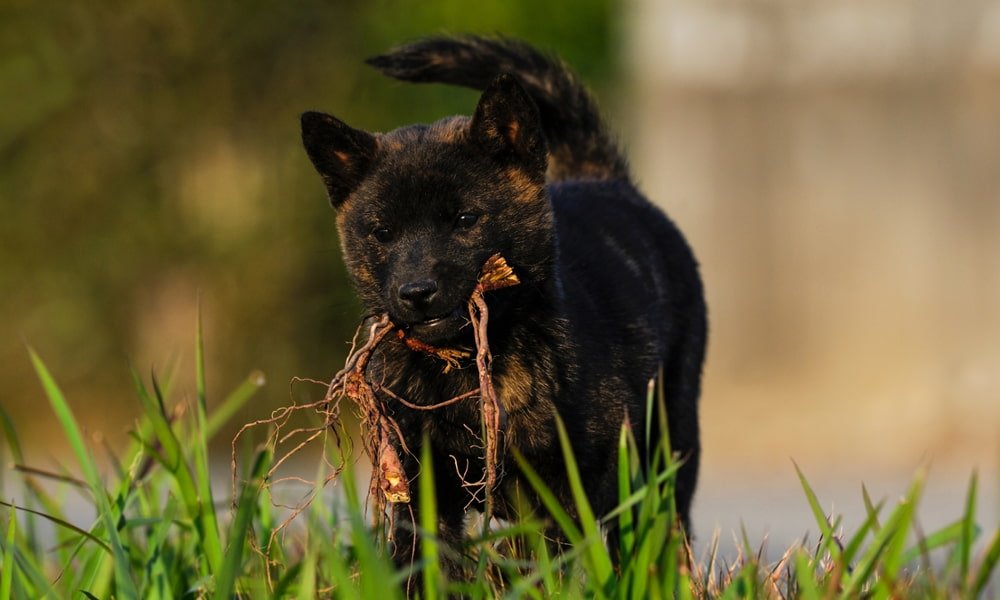
Kishu Ken or Kishu Inu dogs are very calm, and they live to be 11 to 13 years old. They weigh between 30 and 60 pounds. These dogs have high endurance and are very alert.
These dogs come in three colors: black, red, and brindle. Red being extremely rare. This breed is often called tiger dog because of its interesting striped pattern, and they weigh from 20 to 40 pounds and live up to 15 years.
These dogs will do well on high-quality food with fresh water daily. Kai Kens have a double coat that “blows” twice a year. Otherwise, they should be bathed monthly and brushed weekly.
This very active dog needs a bit of exercise and mental stimulation. A walk every day will be good for your Kai Ken, but they need mental stimulation, too. Mental stimulation will prevent any boredom.
This Japanese breed is easy to train when positively enforced, though the dog owner should start training at a young age. Kai Kens are usually very healthy dogs. They can, however, be prone to luxating patellas, hip dysplasia, allergies, and seizures.
Kishu Ken

Kishu Ken dogs are very calm, and they live to be 11 to 13 years old. They weigh between 30 and 60 pounds. These dogs have high endurance and are very alert.
Kishu Kens are not very good with strangers, but very loving towards kids if raised with them.
They have a high sense of prey drive and do not tend to do well with smaller animals. Kishu Kens do very well on high-quality dog foods, though Kishu Kens do tend to have allergies. Meaning you may need to look for grain-free dog food or potato-free dog food.
Many Kishu Kens get nutrient-dense food to help with fitness. When feeding a Kishu Ken it is best to stick to a fish or lamb protein source. Brush out their coats weekly, and bathe them monthly. If they get into something dirty, you can give them an additional bath.
These dogs need a lot of physical exercise. This breed is very active and needs to have mental stimulation so that they do not become bored. The Kishu Kens should be given different tasks to keep them from becoming bored.
When training a Kishu Ken, it is important to know that they are problem solvers. They are very independent dogs, making them stubborn to train. You will need to learn what motivates them in particular. It may be a certain toy or treats.
When it comes to health issues, the largest one for Kishu Ken is allergies. They can be anything from environmental to food. If your Kishu Ken is developing signs of allergies, talk to your vet about the best course of action for your pet.
Japanese Spitz
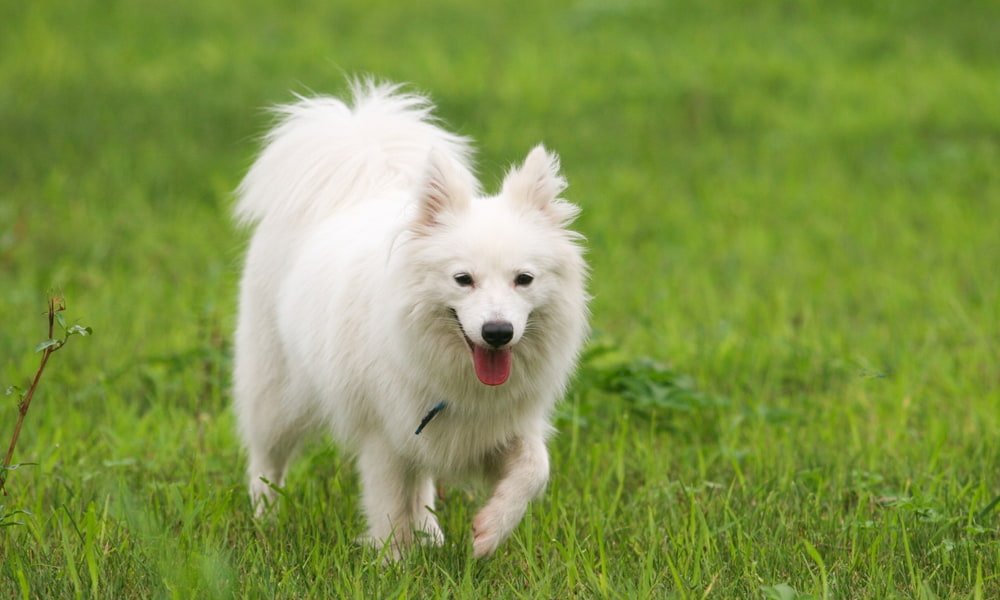
The Japanese Spitz is known for its white fur. These dogs are highly intelligent and low-maintenance. These dogs tend to grow to be about 10 to 24 pounds and live for 12 to 14 years. Japanese Spitz dogs tend to love their families and can become very territorial when strangers approach them.
These dogs will thrive off of a well-balanced diet. They should be fed twice a day and provided fresh and clean water, as you would with any dog. To maintain the Spitz’s white coat, brush it weekly.
Twice a year, they shed heavily and lose large chunks of hair. This period can last up to 2 to 3 weeks. During this time, brush their hair daily.
Baths do not need to be frequent, though monthly bathing is recommended for a double-coated dog. They may not even need a monthly bath due to their coat.
Their coat is very good at repelling things like mud and dirt. You can easily brush them out when dry. A Japanese Spitz does extremely well with plenty of space to run and play but does equally as well in a small apartment. Like many dogs, they need regular exercise. Exercise is good for their physical and mental health and also helps them bond with their owners.
They love to spend time with their family, as they are companion dogs. These white fluffs love pleasing their owners so much that they tend to learn tricks very quickly, making a Japanese Spitz very intelligent so that they can smile with you. These dogs are generally very healthy. A common disease that a Japanese Spitz develops is patella luxation. Patella luxation is when the knee cap begins to dislocate. It may result in needing surgery, and most vets suggest getting your Japanese Spitz tested at least once a year.
Tips For Grooming Double Coated Dogs During Your Dogs “Blow” Season

Step One: Brush them. Brush your dog head to tail to remove any excess hair from their bodies before putting them in the tub to loosen and remove any dead fur from their coat before putting them in the bathtub.
Step Two: Rinse. Rinse down your Japanese dog breed to remove any loose strands you may have missed when brushing them. Use a wet washcloth to wash their face and ears to avoid making them uncomfortable by getting water in their eyes or ears. Avoid putting water directly in their ears, as this can give them an ear infection.
Step Three: Shampoo. Rub their whole body down with soap and scrub away any dirt with your hands.
Step Four: Rinse off all the shampoo. Be sure to get all of it, as any leftover soap may dry up and make their skin so itchy and can make them extremely uncomfortable.
Step Five: Use dog conditioner to make their coats extra soft. Drizzle it along the spine, and rub it into their fur. Let it sit for 5 minutes, if possible. Not all dogs will stand and enjoy the water, so a minute will do too.
Step Six: Rinse out the conditioner. Again, get all the residue out to avoid any skin irritation.
Step Seven: Pull them out of the tub, and dry them off with a towel. You may need a second towel for when the first one becomes soaked. Use the second one to get a more thorough dry.
Double coat dogs tend to get cold much faster than other dogs. You can use a blow dryer as well, leave it on a low setting so that it does not get too hot and burn the dog.
Finding a High-Quality Diet
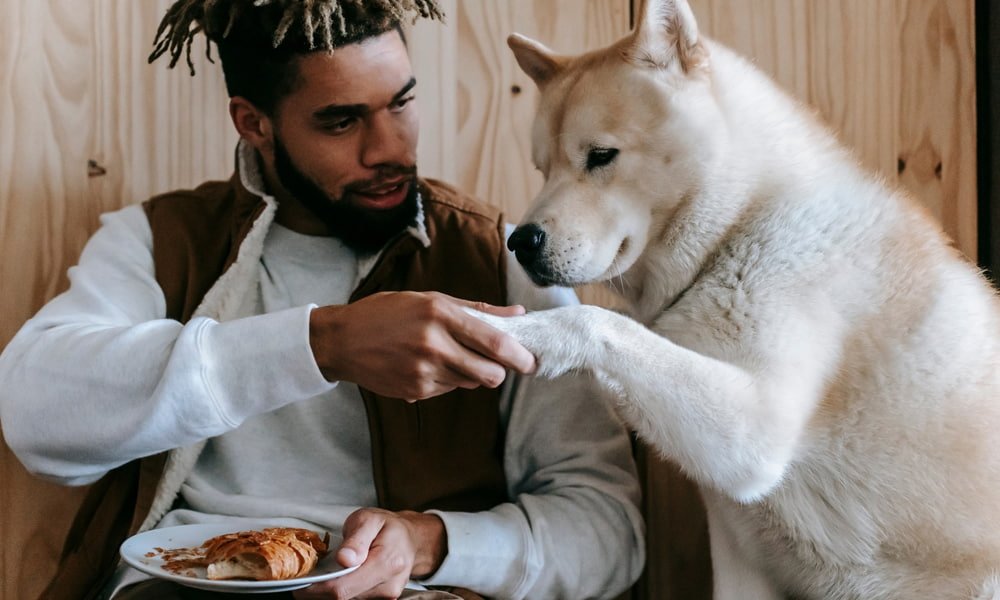
When looking for the best dog food, it is important to ensure that the first ingredient is meat. It should list the specific type of protein that the can contains, chicken, beef, lamb, etc.
You want to make sure that there are little to no ingredients that you cannot pronounce on the ingredients list.
Avoid any form of by-products and excess preservatives. These ingredients can do much more harm than good for your dog, and you will commonly find them in cheap dry dog food.
Be sure that the product you pick is AAFCO (Association of American Feed Control Officials) approved. This designation means it has passed trials or contains the proper amount of nutrients for your pet. If you cannot find the AAFCO label, usually on the back of the can near the ingredients, call the company directly. Ask them what their AAFCO status is.
Be sure to check that the product you choose contains omega fatty acids to help your dog’s brain function. These are in fish and eggs. It will help give your dog a soft, shiny coat and will help prevent flakey skin. The omega fatty acids will also help with joints before it becomes a serious issue.
Look for whole fruits and vegetables as this will also help your dog stay nice and healthy. It will improve their immune function and help with proper digestion.
It must be a balanced diet to prevent other diseases from occurring. If you choose to feed your Japanese dog breed any table scraps, it is important to avoid the following:
- Almonds
- Chocolate
- Cinnamon
- Garlic
- Ice Cream
Ways to Stimulate Your Dog Mentally
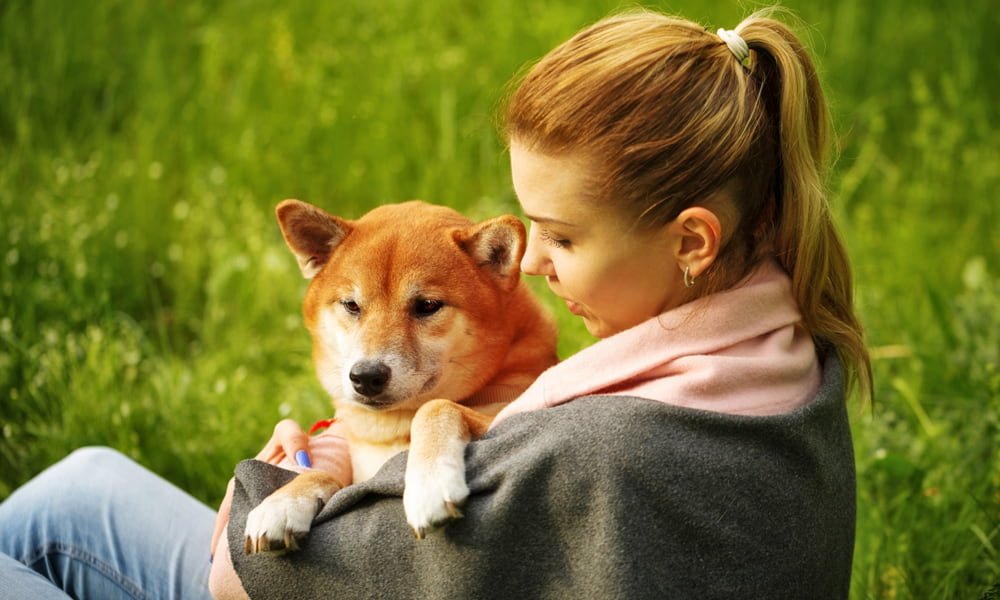
Many Japanese dog breeds need to be mentally stimulated, which might be difficult if you are not sure what to do.
Teach them a new trick – Teaching your dog a new trick will mentally stimulate them. They will need to focus on what you are asking them to do and figure out how to get rewarded.
Give them a job – Playing games like frisbee or fetch will give your dog a job. They were bred to help humans accomplish tasks. Getting them to fetch a ball and bring it back will help them feel like they are doing what they are bred to do.
Interactive toys – Interactive games like a doggie board is a game that gets your dog to use their nose to find treats. Dogs will have to figure out a way to get access to the treat inside the game.
Final Thoughts
Japanese dog breeds are cute, and they can be very energetic. They tend to need mental stimulation and a fair amount of exercise. Find the correct diet for your dog so that they can find the best quality of life necessary. Getting enough nutrients will help with weight and their body in a positive way.
If you still have questions, call your vet to get more information about the specific Japanese dog breed you are looking into.
I grew up in a household that was filled with animals. I believe that my fate as a dog-loving person was sealed in early childhood since my parents owned several dogs of varying sizes and breeds. There was no choice but to take care of and learn about dog habits and the best animal care practices — otherwise, I’d be clueless about how to go about the creatures I was surrounded by day and night.
As a life-long puppy lover, I know a thing or two about dogs and how to go about caring for them in the best way possible. Although I’m not a professionally trained dog behaviorist, trainer, or veterinarian, all of my knowledge and experience with canines comes from a place of love and a deep-rooted passion for dogs and animals in general.
Seeing as dogs kept me company throughout every stage of my life, I decided to follow a different path in my academic life and obtained a Bachelor’s and Master’s degrees in Marketing Management and Digital Advertising, which ultimately allowed me to combine my professional training and personal experience by creating the ultimate dog lover’s resource website! Along with my husband, Dave, I run MySweetPuppy for like-minded dog lovers who want to have a single, clear, and reliable information source about anything and everything related to dogs and their well-being.


